So far I have avoided the tourist hotspots, being content to be a lone foreigner in most towns I pass through.
The Mae Hong Son 'loop' however has thrown me into contact with Europeans every day. It's been nice to catch up with some news and to have a conversation that lasts more than three sentences, but I'm starting to miss the novelty of being a novelty.
At first it was just Ben and Geert that were doing the loop on scooters. We spent a couple of pleasant evenings together but the next day it was minibuses full of German and Japanese tourists.
I had stopped at the fish cave, a shrine where the fish grow to overly large proportions. Most 'attractions' like this are signposted at 20 - 40 km from the main road, meaning as much as a whole days round trip for me on a bike. When I saw one waterfall signposted at just 1.5 km up a side road I decided to investigate. A huge swathe of rock worn smooth by centuries of rushing water met my eye. It was only as I drew closer that I saw the trickle of a stream that was dribbling slowly down the rock face. It may be winter here, but it's also the dry season. It was quite a scenic spot and not too far off my route but I would have been disappointed to have taken a whole day out to see it.
The Mae Hong Son 'loop' however has thrown me into contact with Europeans every day. It's been nice to catch up with some news and to have a conversation that lasts more than three sentences, but I'm starting to miss the novelty of being a novelty.
At first it was just Ben and Geert that were doing the loop on scooters. We spent a couple of pleasant evenings together but the next day it was minibuses full of German and Japanese tourists.
I had stopped at the fish cave, a shrine where the fish grow to overly large proportions. Most 'attractions' like this are signposted at 20 - 40 km from the main road, meaning as much as a whole days round trip for me on a bike. When I saw one waterfall signposted at just 1.5 km up a side road I decided to investigate. A huge swathe of rock worn smooth by centuries of rushing water met my eye. It was only as I drew closer that I saw the trickle of a stream that was dribbling slowly down the rock face. It may be winter here, but it's also the dry season. It was quite a scenic spot and not too far off my route but I would have been disappointed to have taken a whole day out to see it.
The fish cave was different. It was actually on the side of the road. A large car park almost full of minibuses running sightseeing trips from the nearest towns had disgorged their cargo who were happily buying souvenirs when I got there. Food sellers were also doing big business. The fish cave is a small overhang of rock out of which a stream emerges. The fish there were certainly big, which is why a shrine had been set up under the overhang. The stream was dammed about 100 metres away meaning that the fish were captive. Tourists are able to buy packs of food which they throw into the pool in handfuls creating a feeding frenzy in the water. As the fish were captive and being constantly fed by tourists it's no wonder that they grow to such proportions. Sounds like a self fulfilling prophecy to me.
From the fish cave it was another long uphill climb before descending into Soppong for the night. This was my first taste of sleeping in a hut. Huts are the most basic type of accommodation apart from tents. A bamboo hut with a large gap between the walls and the roof. A matress lies on a raided section of floor with a mosquito net around it. A bedside lamp and one socket completes the luxuries. A shower and toilet were just 10 metres away. As we were in a valley and close to the river it got cold overnight so I was grateful for the 2 quilts and 4 blankets that were provided. It felt so snug inside that I didn't feel like making an early start in the morning but instead spent it having a leisurely breakfast with two French couples that were spending a month in Thailand using buses and the occasionally rented scooters to get about.
Amazed by my plans they asked about my sponsorship. No sponsorship I told them. Just me. They insisted on becoming "small sponsors" and paid for my breakfast before we parted. Later that day I heard shouts of "Bravo" and "Bon Courage" from an open bus window as they passed me on a particularly steep section of mountain road giving me a morale boost to spin on to the top.
The countdown markers to Pai were coming thick and fast after that. I found another bamboo hut for the night, this one at the Mountain View resort, a very fancy name for an area of dirt with a dozen bamboo huts dotted around a central drink and snack bar. Still, it had everything I needed for a couple of nights rest. This place is where all the hippies were coming from. Not since Chaing Mai had I seen so many Europeans and so many signs in English. Not all of the signs would pass the Good English Guides' spelling and grammar checks, but that's all part of the charm of frontier towns I suppose.
Amazed by my plans they asked about my sponsorship. No sponsorship I told them. Just me. They insisted on becoming "small sponsors" and paid for my breakfast before we parted. Later that day I heard shouts of "Bravo" and "Bon Courage" from an open bus window as they passed me on a particularly steep section of mountain road giving me a morale boost to spin on to the top.
The countdown markers to Pai were coming thick and fast after that. I found another bamboo hut for the night, this one at the Mountain View resort, a very fancy name for an area of dirt with a dozen bamboo huts dotted around a central drink and snack bar. Still, it had everything I needed for a couple of nights rest. This place is where all the hippies were coming from. Not since Chaing Mai had I seen so many Europeans and so many signs in English. Not all of the signs would pass the Good English Guides' spelling and grammar checks, but that's all part of the charm of frontier towns I suppose.



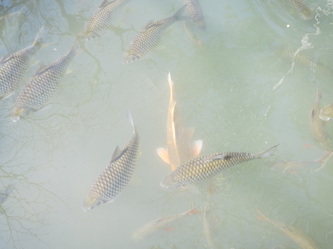
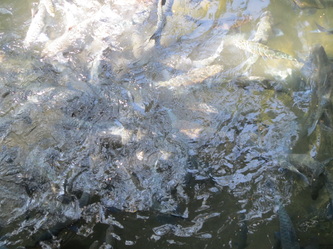
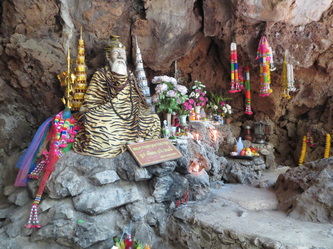


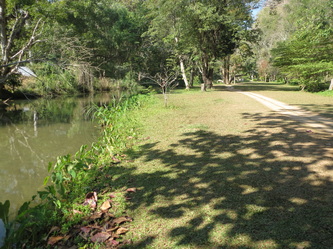
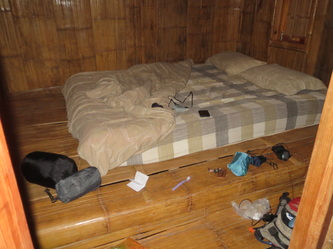

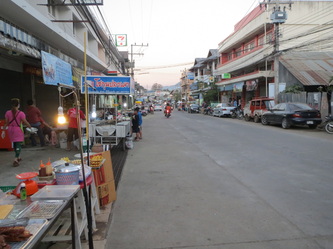
 RSS Feed
RSS Feed